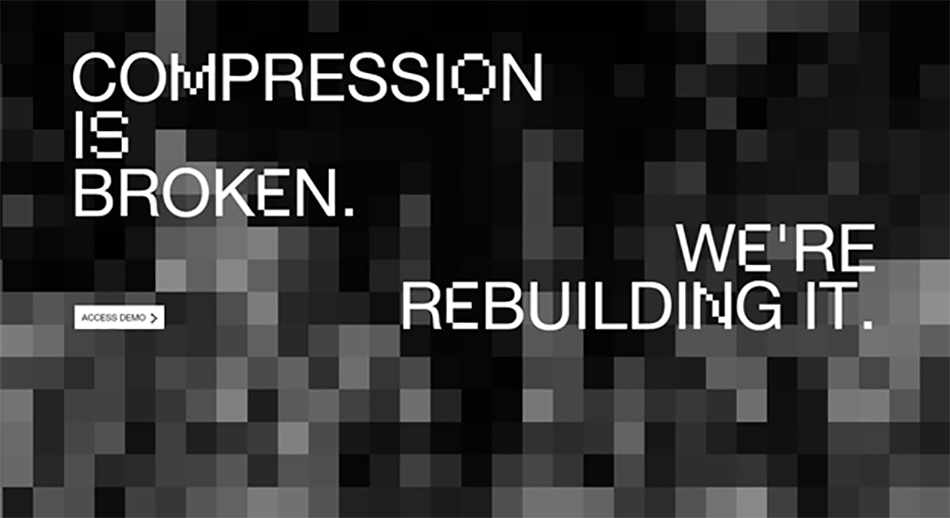AI Can Make Video File Sizes Smaller and Save the Internet?
Recent estimates show that around 2.5 quintillion bytes of data is generated every day. This translates to 2.5 million terabytes or approximately 2.5 million 1-terabyte hard drives reaching full capacity in just 24 hours. The numbers are expected to continue growing exponentially as more people use smart and web-enabled devices.
Even as storage devices appear to grow in capacity year after year, it is inevitable for data generation to eventually overwhelm storage. There may come a time when data storage service providers like Google Drive will no longer be offering generous free storage. It is possible that one-terabyte SSDs in devices may become the lowest storage option for smartphones and tablet computers.
One of the biggest reasons why data generation has accelerated this rapidly is the rise of high-resolution videos. With most smartphones now capable of taking 4K videos that take up around 675 MB of storage (per minute), it should not come as a surprise that there are worries over the global data ecosystem running out of storage space.
Rebuilding compression
To address the data storage concern, a startup called Deep Render is using AI to reduce video file sizes. The firm says that its AI-powered technology makes it possible to reduce the file size of videos by five times. Even better, Deep Render’s video compression technology is being developed further to achieve better file size reduction of up to fifty times its current output.
Video compression refers to the process of bringing down the number of bits of data in a video file without losing the details that carry crucial visual representation at a certain quality. It would be difficult to save videos in their raw format, as doing so requires massive storage. It is the same with photos that have DNG as the raw format, which is then compressed to JPG or PNG to reduce the file to around half or even up to a fifth of the original file size.
Chri Besenbruch and Asralan Zafar, the founders of Deep Render, say that they can fix the problem of ever increasing video file sizes through AI technology. They are confident that the solution they developed from when they were London’s Imperial College computer science students can solve the challenge brought about by new video-related technologies.
“Compression is all about exploiting redundancies,” Zafar points out, so the solution is to take advantage of redundancies in a more granular fashion. Instead of relying on conventional compression methods, Deep Render traces each pixel, its movements, and the destination of the pixels in a series of frames. This is possible with the help of machine learning, and by doing so, compression can remove as much data as possible while leaving to AI the task of interpolating redundancies to retain visual quality.
Not the first
To be clear, though, Deep Render is not the first video compression technology aimed at reducing video file sizes. For one, there is an AI-driven video compression project called Compressed Vision from Alphabet through its DeepMind arm. Disney and Nvidia also have their respective video compression technologies that seek to leverage new technologies to reduce the file sizes of videos. These technologies were made public a couple of years back, but there have been no clear details as to their file size reduction capabilities. Also, these compression solutions have not gained widespread adoption yet.
Deep Render has bold claims over its technology, saying that it is 80 years ahead of its competitors. The startup has already secured multiple patents for its tech. Proving the viability of its technology, Deep Render has already reached a valuation of $30 million, including the $9 million it raised in a Series A funding round in the first quarter of 2023 and the $2.7 million grant provided by the European Innovation Council.
Saving the internet
There is a possibility for data generation to overtake storage capacity, especially with the commonplaceness of high-quality video capture devices and the ease of sharing or duplicating content online. Large amounts of video data do not only result in storage problems, they also entail traffic difficulties. With video streaming becoming more common than ever, it would not be an overstatement to say that the internet is facing some serious reckoning.
AI-powered video compression is another practical application of artificial intelligence, and its benefits cannot be understated. The ability to significantly reduce video file sizes expands data storage and dramatically improves user experiences when it comes to streaming videos online. AI-driven compression can also benefit images and the graphics in video games, which means faster loading times for websites and less latency for online video gaming. These positively impact the majority of the things people do on the internet.


